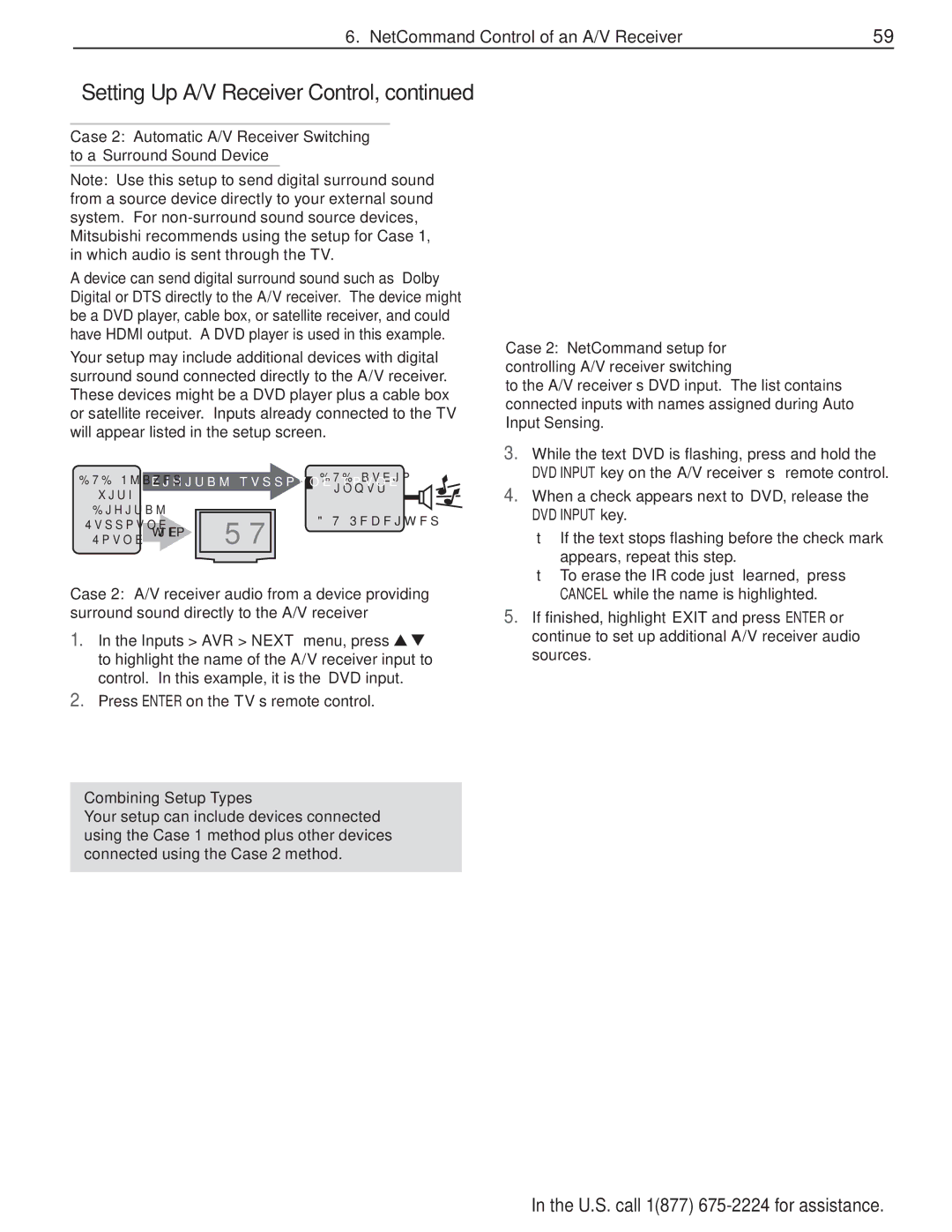
6. NetCommand Control of an A/V Receiver | 59 |
Setting Up A/V Receiver Control, continued
Case 2: Automatic A/V Receiver Switching to a Surround Sound Device
Note: Use this setup to send digital surround sound from a source device directly to your external sound system. For
A device can send digital surround sound such as Dolby Digital or DTS directly to the A/V receiver. The device might be a DVD player, cable box, or satellite receiver, and could have HDMI output. A DVD player is used in this example.
Your setup may include additional devices with digital surround sound connected directly to the A/V receiver. These devices might be a DVD player plus a cable box or satellite receiver. Inputs already connected to the TV will appear listed in the setup screen.
DVD Player | digital surround sound |
| DVD audio | ||
| |||||
with |
|
|
|
| input |
|
|
|
|
| |
Digital |
|
|
|
| A/V Receiver |
Surround | video | TV |
|
| |
|
|
| |||
Sound |
|
|
| ||
|
|
|
| ||
Case 2: A/V receiver audio from a device providing surround sound directly to the A/V receiver
1.In the Inputs > AVR > NEXT menu, press ![]()
![]() to highlight the name of the A/V receiver input to control. In this example, it is the DVD input.
to highlight the name of the A/V receiver input to control. In this example, it is the DVD input.
2.Press ENTER on the TV’s remote control.
Combining Setup Types
Your setup can include devices connected using the Case 1 method plus other devices connected using the Case 2 method.
Case 2: NetCommand setup for controlling A/V receiver switching
to the A/V receiver’s DVD input. The list contains connected inputs with names assigned during Auto Input Sensing.
3.While the text DVD is flashing, press and hold the DVD INPUT key on the A/V receiver’s remote control.
4.When a check appears next to DVD, release the DVD INPUT key.
•If the text stops flashing before the check mark appears, repeat this step.
•To erase the IR code just “learned,” press CANCEL while the name is highlighted.
5.If finished, highlight EXIT and press ENTER or continue to set up additional A/V receiver audio sources.
